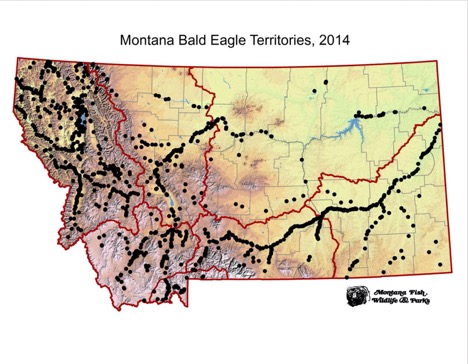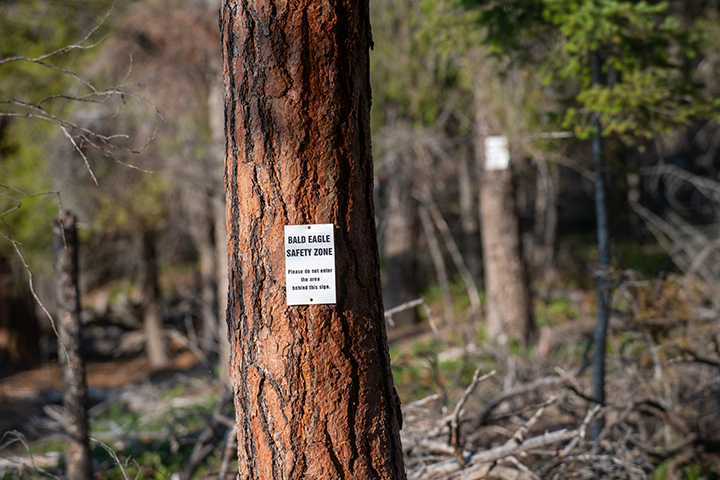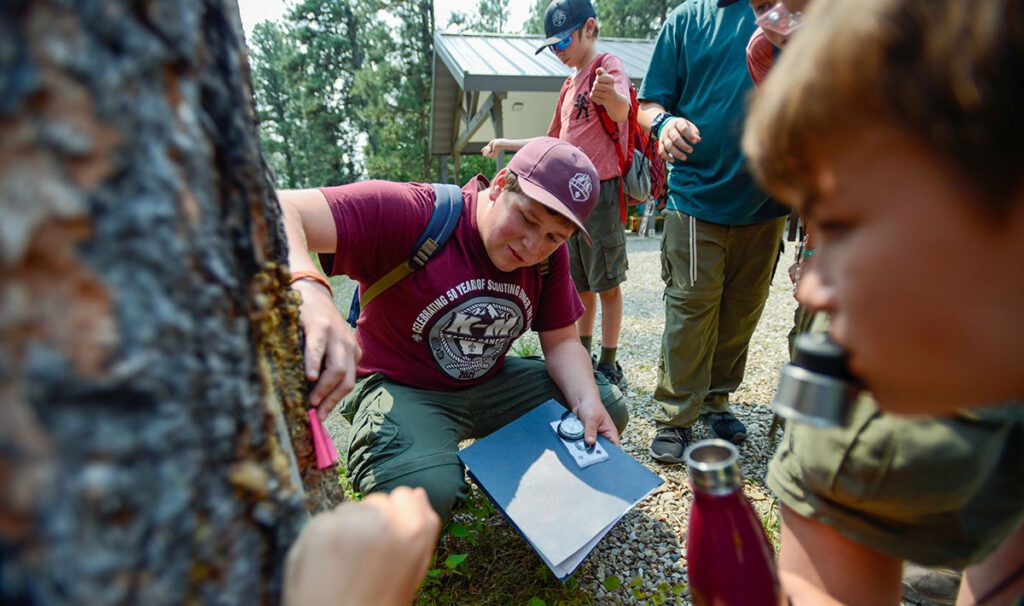The History
For thousands of years, bald eagles were found throughout Montana. Reports of bald eagles along the rivers and lakes of the state were common in old journals and records starting with the journals of Lewis and Clark.
With the increase in shoreline development, habitat loss, and illegal shooting, bald eagle numbers began to decline in the 1800s. This decline was accelerated with the widespread use of the pesticide dichloro diphenyl trichloroethane (DDT) beginning in the mid-1940s.
DDT was especially harmful to bald eagles and other raptors because it caused their eggs to have thin shells and, in some cases, no shells at all. This lead to dramatic declines in bald eagle numbers because they could not reproduce anymore.
In 1963 there were only 417 active Bald Eagle nests in the entire lower 48 states.
Ecological disasters from DDT use caused it to be banned in the US in 1972. Bald eagles were listed under the Endangered Species Act in 1978 and at that time there were only 12 known breeding pairs of bald eagles in all of Montana.
Recovery efforts for the Bald Eagle included protection against illegal shooting and poisoning, and the protection of all known nests because Eagles mate for life and pairs usually return to the same nest each year to breed.
With protection and the banning of DDT, bald eagle numbers have increased steadily in Montana and the number of nesting eagles is now estimated at over 800 state-wide. (Figure 1).
Eagle’s Nest At Melita Island
The bald eagle nest at Camp Melita Island on Flathead Lake has been officially monitored since 1991, but there may have been eagle nests on the island before that.
Between 1991 and 2014 the Melita Island nest produced at least 23 young bald eagles. This nest remains in use as of 2019 and there are signs posted around the nest asking Scouts and Scouters to stay out of the area around the nest tree.
Bald eagles are sensitive to human disturbance and can abandon their nest if disturbed during the nesting season, which is between March and August. The presence of an active bald eagle next on Melita Island is a sign of a healthy ecosystem on Flathead Lake. The Montana Council is proud to maintain and care for the bald eagles and their nest on Melita Island.
Natural resource conservation and environmental protection have always been an important part of Scouting. Our care for the healthy bald eagles on Melita Island demonstrates the commitment of the Montana Council to this Scouting ideal.
Chris Servheen serves Chairman of the Montana Council’s Conservation Committee.






